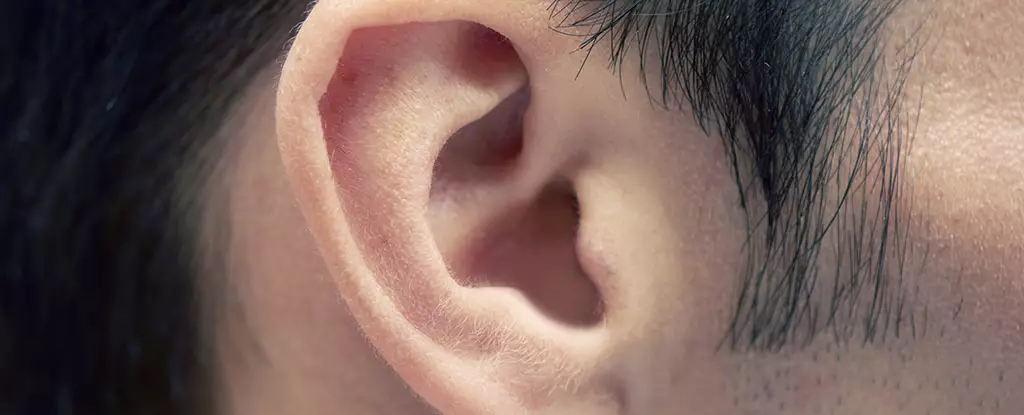Parkinson’s disease remains a daunting neurological puzzle, with early diagnosis notoriously elusive. Traditional diagnostic tools hinge heavily on clinical symptoms and expensive imaging scans that often identify the disease only after significant brain damage has already occurred. Against this backdrop, the recent exploration of volatile organic compounds (VOCs) in earwax as a diagnostic marker is not only intriguing but also refreshingly bold. This innovative approach bypasses the limitations of previous methods tapping into skin sebum—an external, environment-exposed substance prone to contamination—and focuses on a more protected medium within the ear canal.
What strikes me as particularly exciting about targeting earwax VOCs is the potential for a minimally invasive, cost-effective diagnostic tool that could be widely deployed. Rather than relying on subjective symptom observation or costly, time-intensive brain imaging, an ear swab test could revolutionize how we detect Parkinson’s, catching signals much earlier. This aligns with a broader push in modern medicine: emphasizing prevention and early intervention instead of treatment after the fact.
Decoding the Chemical Footprints of Neurodegeneration
The biochemical premise underlying this research is compelling. VOCs are minute molecules produced by various physiological processes, and their alterations can reflect deeper pathological changes. Parkinson’s disease, marked by inflammation and cellular stress in the nervous system, appears to leave a subtle but measurable scent signature in earwax. The identification of four specific VOCs—ethylbenzene, 4-ethyltoluene, pentanal, and 2-pentadecyl-1,3-dioxolane—is more than a technical note; it offers a potential chemical fingerprint to flag early neurodegeneration.
This concept of a “scent of disease” does not just tantalize the imagination but potentially opens a new frontier where chemistry and neurology intersect. It hints at an overlooked microcosm of bodily changes that could serve as a window into complex brain disorders. There is an almost poetic justice in discovering that a hidden, sticky substance long thought of as mere ear detritus might yield critical insights into one of humanity’s most stubborn ailments.
Artificial Intelligence: Accelerating Promise with Caveats
The researchers’ integration of artificial intelligence into this diagnostic model adds another layer of innovation—and risk. The AI’s 94.4% accuracy in differentiating Parkinson’s patients from healthy individuals is impressive as a proof of concept. Yet, the study’s limited sample size (just over 200 participants) signals caution. AI models thrive on vast, diverse data sets; premature triumphs on small groups often falter under real-world complexity.
Scientifically, the allure of deploying an AI-powered “olfactory system” is hard to resist. It suggests a future where simple devices at the bedside or in clinics could screen patients rapidly and non-invasively, drastically broadening access to early Parkinson’s diagnosis. Socially, it promises to democratize healthcare by reducing costs and reliance on specialized imaging centers. However, before embracing such high-tech optimism, it’s vital to demand rigorous validation across broader populations and ethnicities to avoid exacerbating healthcare disparities.
The Broader Implications for Neurodegenerative Research
Beyond diagnostics, these findings could reshape our fundamental understanding of Parkinson’s disease. If certain VOCs reliably reflect early pathological changes, they might illuminate the disease’s mysterious origins, bridging the biochemical environment with neurological decline. This could guide not only early detection but also new therapeutic strategies aimed at halting or slowing progression.
Still, this vision demands patience. The researchers prudently call for multi-center, multi-ethnic studies spanning different disease stages—an essential step before clinical application. It underlines a familiar tension in translational science: between hopeful breakthroughs announced in isolated laboratories and the slow, grinding process needed to convert discoveries into standardized care. For patients and advocates, this dialectic can be frustrating but is necessary to ensure accuracy, safety, and equity.
A New Paradigm That Challenges Traditional Mindsets
At its core, this research challenges the way we think about neurological diseases—not just as brain-centric disorders diagnosed through imaging and clinical symptoms but as systemic conditions with biochemical echoes detectable in unexpected places. The humble earwax, overlooked and often dismissed, might turn out to be a goldmine of information. Embracing such unconventional diagnostic paths requires openness from the medical community and funding agencies—a cultural shift that is sometimes harder than scientific breakthroughs themselves.
From a center-wing liberal perspective, the promise of an accessible, affordable diagnostic tool aligns with the imperative to reduce health inequities and improve outcomes for all sectors of society. Yet, it also reminds us to be vigilant against premature hype and the potential for new technologies to reinforce existing disparities if not carefully implemented.
In sum, while challenges remain, the exploration of earwax VOCs to detect Parkinson’s is an exciting and much-needed innovation that could transform the way we understand, diagnose, and eventually combat this complex disease.

Leave a Reply